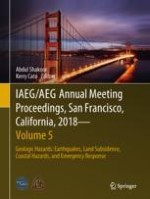This book is one out of six IAEG XIII Congress and AEG 61st Annual Meeting proceeding volumes, and deals with topics related to geologic hazards, such as earthquakes, land subsidence, coastal hazards, and the emergency response.
The theme of the IAEG/AEG Meeting, held in San Francisco from September 17-21, 2018, is Engineering Geology for a Sustainable World. The meeting proceedings analyze the dynamic role of engineering geology in our changing world. The meeting topics and subject areas of the six volumes are: Slope Stability: Case Histories, Landslide Mapping, Emerging Technologies; Geotechnical and Environmental Site Characterization; Mining, Aggregates, Karst; Dams, Tunnels, Groundwater Resources, Climate Change; Geologic Hazards: Earthquakes, Land Subsidence, Coastal Hazards, and Emergency Response; and Advances in Engineering Geology: Education, Soil and Rock Properties, Modeling.
